Are you having a hard time starting your car after the installation of a remote start system? Do you want to know why it is happening and what you can do about it? You’ve come to the right place, for we have researched this question, and we have the answer for you.
The remote start system introduces a parasitic current draw on your car battery. If you don’t use your car for several days, this parasitic current draw may drain your battery to a point where it will no longer have enough charge to start your car.
Let’s talk more about the remote start feature and why it drains your car battery’s charge in the succeeding sections. Learn about the other factors that can affect how much power your car needs from the battery to start the engine in the sections below.
Read on!
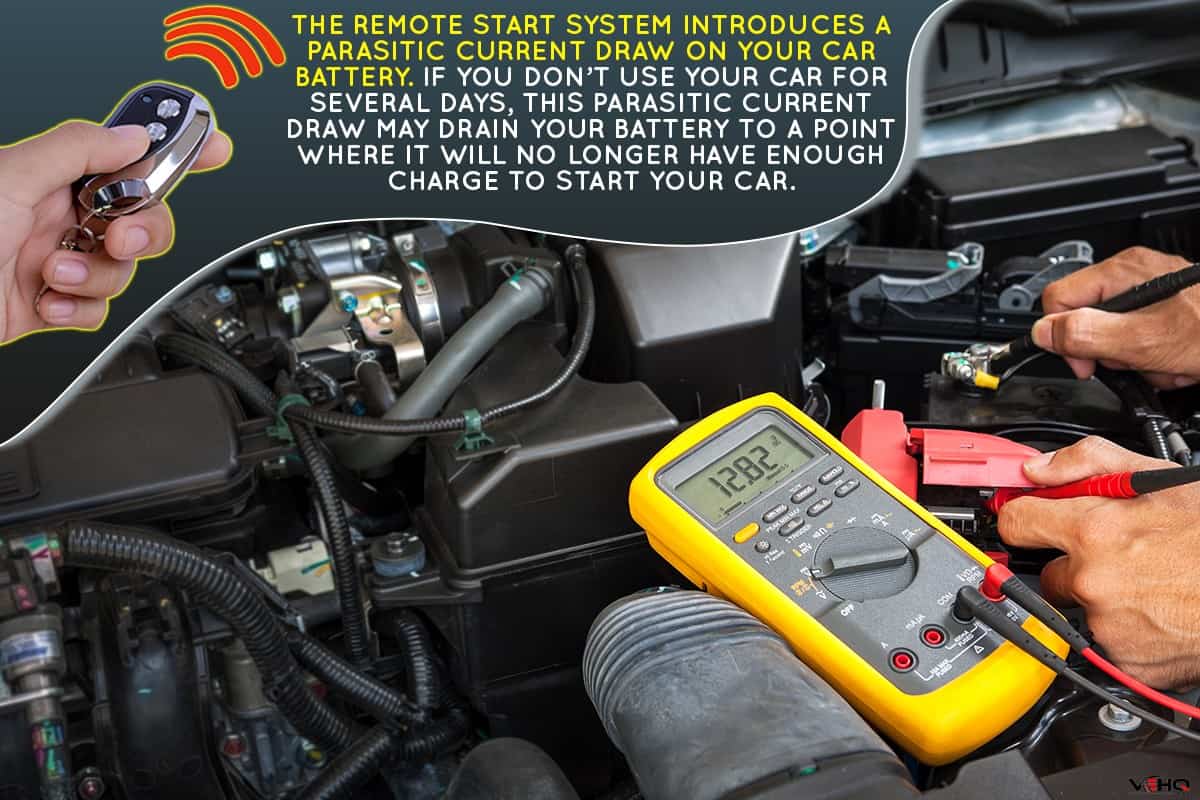
What is a parasitic current draw?
A parasitic current draw or parasitic battery drain is anything that draws power inside your car after the engine is shut off.
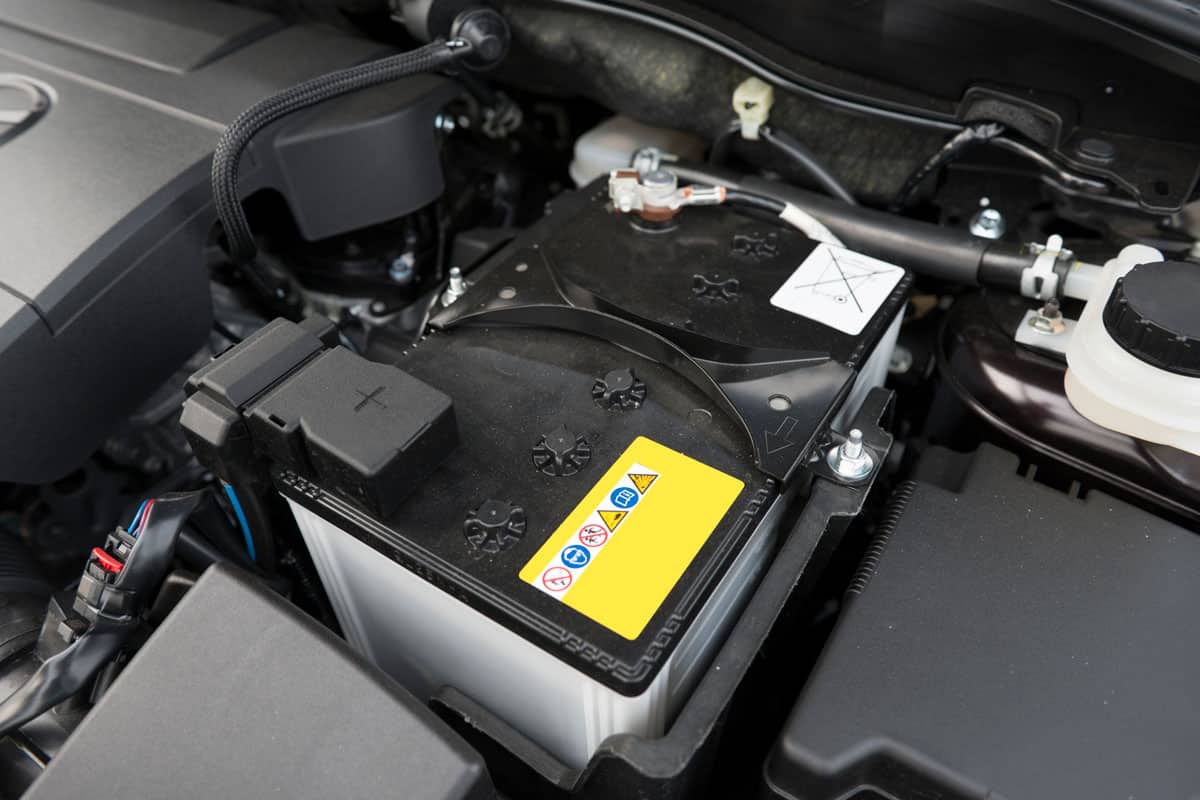
In older cars, a car battery has only one primary function—to provide the necessary power to start the engine. There have been a lot of technological improvements to the car since then.
Technology regularly adds new features to cars. Some of these improvements introduce features that require a constant power source—even when the engine is off. As new technologies for cars come out, the demand for electrical energy from the car battery rises.
Unfortunately, the car battery improved very little. The amount of power that it can provide and store, for example, remains almost the same. Leaving the headlights on overnight will drain the car battery in a modern car just like it would in the past.
Therefore, it can be hard for the car battery to keep up with the increasing energy demands of a modern car.
In older cars, the battery only needs to supply energy to minor systems like the internal clock.
When the ECU came out, the number of devices that needed power increased.
The data storage of the car needs a constant supply of electrical energy. Once the supply of electricity stops, the information will be lost. This includes settings and preferences.
Each device that requires electrical energy has an energy consumption rating. This consumption is measured in milliamps. The capacity of a car battery, on the other hand, is measured in ampere-hours.
We will talk more about this in a later section.
Effect Of Temperatures On Batteries
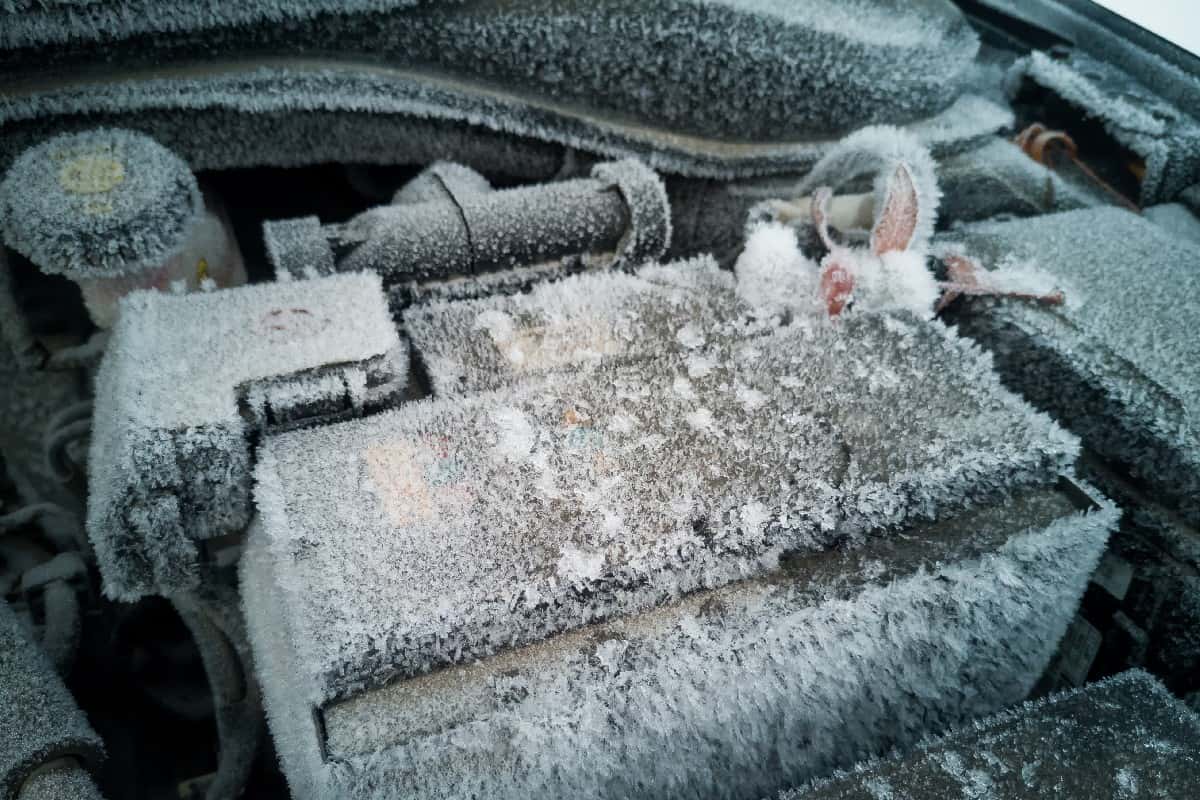
Temperature changes have an effect on the capacity of your car battery. The capacity of the car battery goes down when the temperature is cold, and it increases when the temperature is warm.
This is one of the reasons why it can be more difficult to start your car during winter mornings.
Car battery manufacturers often measure the capacity of their batteries at around 77 degrees Fahrenheit.
When the temperature drops to freezing levels, the battery capacity also drops by 20%. Moreover, if it drops further to -22 degrees Fahrenheit, the battery capacity will also drop by 50%. On the other hand, the battery capacity will increase by up to 12% if the temperature rises to 122 degrees Fahrenheit.
The changes in battery capacity due to shifts in temperature also affect the service life of the battery.
Even though cold temperatures decrease the battery’s energy capacity, the positive side effect is that the service life of the battery increases. Even though you lose up to 50% capacity at -22 degrees Fahrenheit, the service life will potentially increase by up to 60%. On the other hand, the service life of a car battery drops by half for every temperature increase of 15 degrees Fahrenheit above 77 degrees.
These figures apply not only to traditional lead-acid batteries but also to all types of batteries that use the same core lead-acid technology. Whether your battery is a gel battery, an AGM, or a sealed type, you can expect the same variations in capacity and service life as the temperature swings from high to low.
A Look At Parasitic Draw Through Numbers
Devices in your car that consume electrical energy after the engine shut off contribute to draining your car battery. When the engine is running, the task of providing electrical energy falls to the alternator. The alternator converts mechanical energy from the engine into electrical energy.
However, when you turn off the engine, the task of providing energy for the devices that are still running (or still needs to run) falls to the car battery.
An average car battery has a capacity of 70Ah or ampere-hours. This is the capacity if the battery is new and healthy. A car battery’s capacity drops as the battery ages.
Additionally, the voltage of the battery goes down as it loses charge. This means that the battery doesn’t need to be completely discharged before it loses the ability to start your car.
Thus, you need to maintain the battery charge above 50%. The battery’s voltage drops to 12.2 volts when it drops to 50%.
Thus, let’s keep the capacity at 35Ah so you wouldn’t have problems starting the car.
The normal parasitic draw of modern cars is somewhere between 20 to 50 milliamperes.
If the parasitic draw of a car is 50 milliamperes, it can consume 1.2Ah per day. This means that a car battery with a capacity of 35Ah will be completely drained in 29 days.
However, keep in mind that the computations assume perfect conditions. It assumes that the battery is new, there are no grounded wires that consume additional energy, and you’re trying to start your car at 77 degrees.
If you try to start your car on a very cold morning, you can lose up to half of that capacity. This means that the normal parasitic draw will drain your car’s battery in around two weeks in winter.
Parasitic Draw From Remote Starter
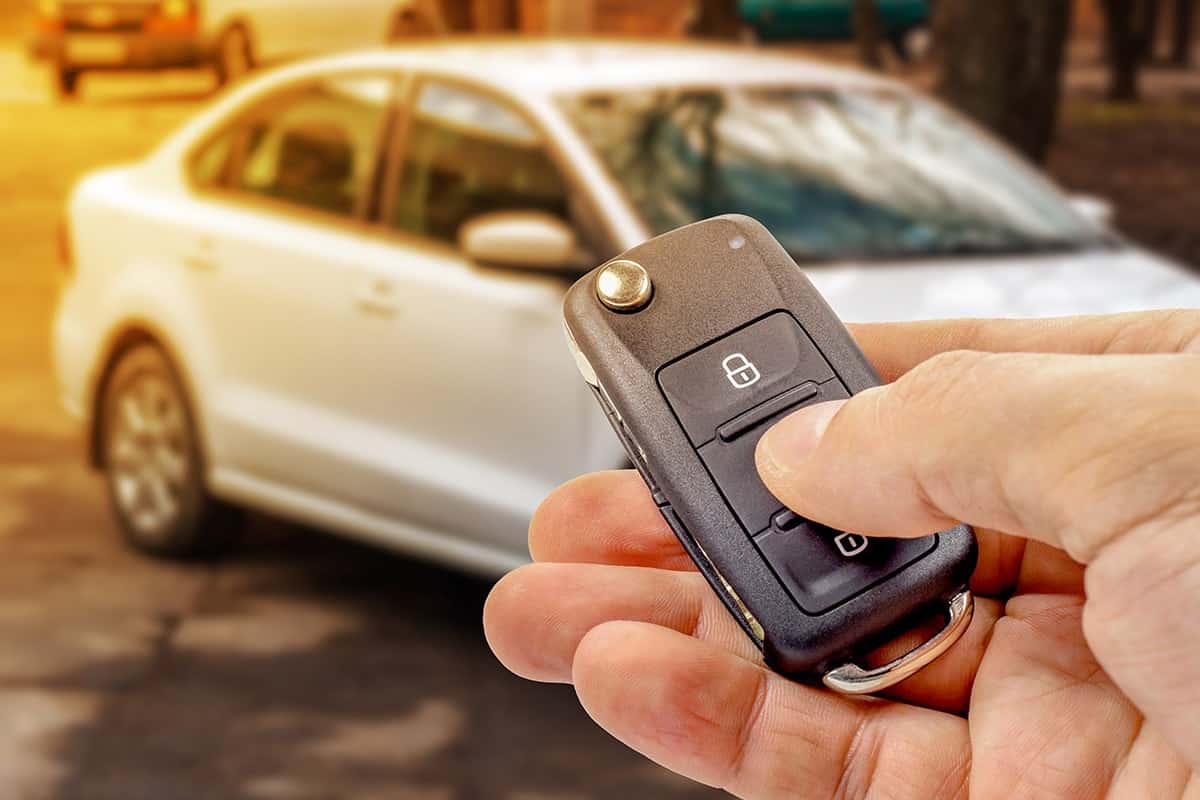
Remote starters consume a larger amount of electricity because of the type of wireless connection that it maintains with your phone or the remote. If you observe your phone, it will consume the battery charge faster when any of the wireless features are active—including internet connectivity. A remote starter module has a similar power consumption.
The farther the range of your remote start system, expect a bigger parasitic draw on the battery.
Remote start features from the factory will consume slightly less power because they match it with the rest of the parasitic draw on the vehicle to avoid rapid battery discharge. However, this “less power consumption” is still high since it can be around 60 to 75 milliamperes.
An aftermarket remote start system consumes a lot more power because they do not have any power draw references to match the power consumption of the product. Moreover, they have fewer resources for the research and development of a design that will consume less power.
On average, aftermarket remote start modules can consume anywhere from 80 milliamperes to more than 1000 milliamperes.
Factory-Installed Remote Starter
Let’s try to compute how fast parasitic draw will drain your battery with a factory remote starter or drone.
First, we add 75 milliamperes to the original 50 milliamperes from earlier, and we will get 125. We convert that to amperes by dividing it by 1,000, and we get 0.125. We then multiply it by 24 hours, and we get 3Ah or 3 ampere-hours.
We then divide the 35Ah capacity by 3Ah, and we have 11.6 days or barely 12 days. In winter, that is less than a week. And it will go down as your battery ages.
Aftermarket Remote Starter
Let’s try an aftermarket remote starter. Because the consumption range is so big, let’s use a lower value of 150 milliamperes.
Adding that to the original draw, we get 200. Converting to amperes and multiplying by 24 hours, we get 4.8Ah. We then divide the 35Ah capacity by 4.8Ah, and we get 7.2—barely a week.
In winter, that will be just three to four days.
What if you’re using an aftermarket remote starter that consumes a higher current? If you have additional aftermarket devices in your car, then the total parasitic draw will be higher. Moreover, improper installation of aftermarket remote start systems can introduce a wiring ground that will consume additional electrical energy.
Therefore, a remote start draining your car battery is an expected result.
How to prevent the remote start from draining the battery?
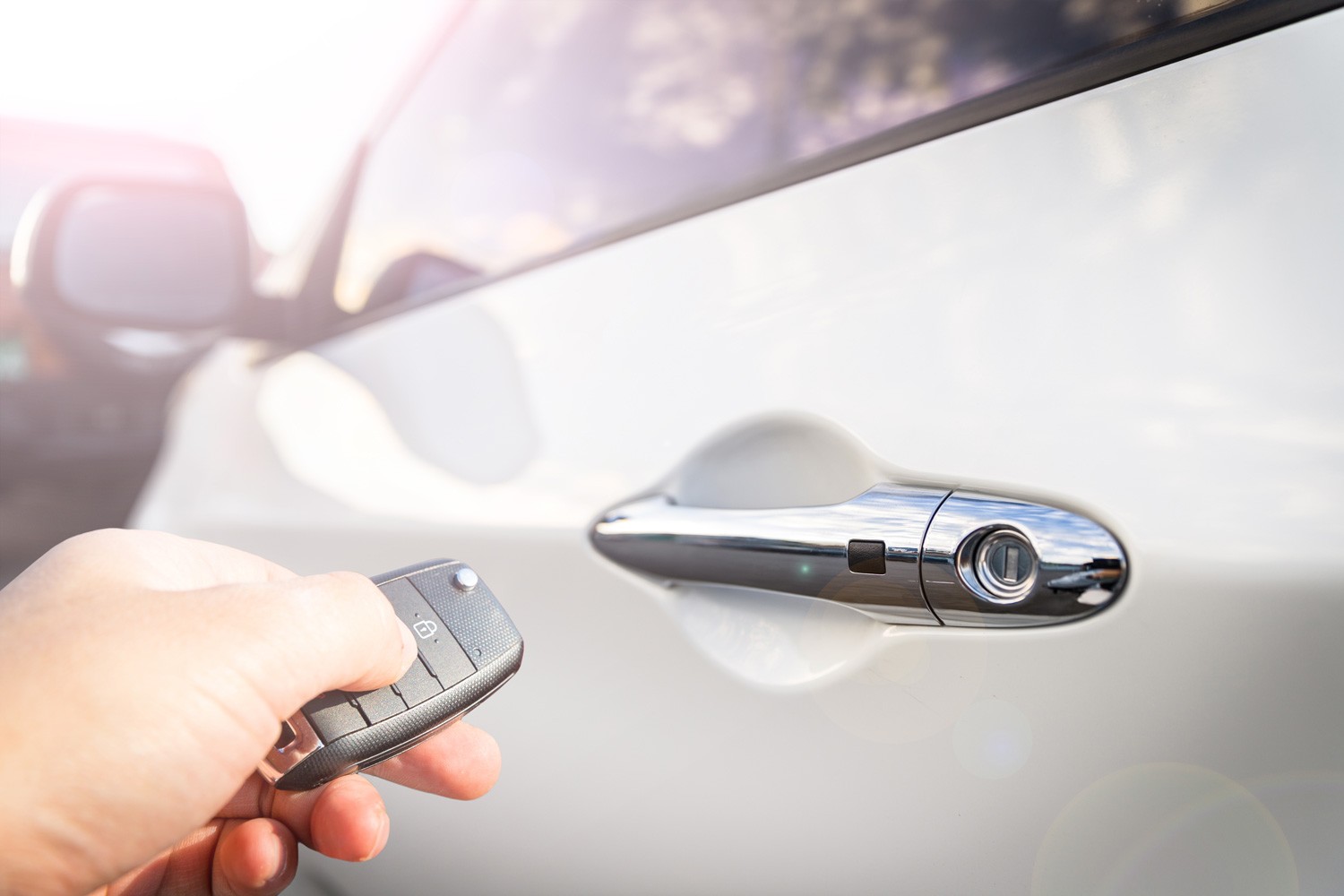
The best solution to prevent a remote start system from draining the battery of your car is to disable it. However, disabling it will render your remote start system unusable. You will no longer be able to use it.
Another option is to install a disabling switch. The switch will allow you to easily turn it off when you don’t need it—to save battery charge and turn it back on when you need to use it.
If you use your car daily, then your car will be able to recharge any energy lost to the remote start system. Keep in mind that short drives will not be enough to recharge your car battery back to full.
However, when you think about it, is it really worth it to experience the inconvenience of having a dead battery when you least expect it for the ability to start your vehicle remotely?
Conclusion
![A remote car keys and black car in the house, Why Is My Remote Start Disabled? [Inc. System Fault]](https://vehq.com/wp-content/uploads/2022/10/Remote-car-keys-and-black-car-in-the-house.jpg)
Having a remote start system is an additional parasitic draw on your car’s battery that can leave you with a dead battery when you least expect it.
If you enjoyed reading this article, you might find the articles below equally enjoyable to read:

I love it very much and now I know why my after market remote starter drained my car battery .I didn’t f drive my Saturn Astra de for 4days and we had one day -28 degrees Celsius and my car wouldn’t start like I said before my battery was dead.I did charge my battery and I tried to start my car and nothing happen .Anyway thank you very much for your information.